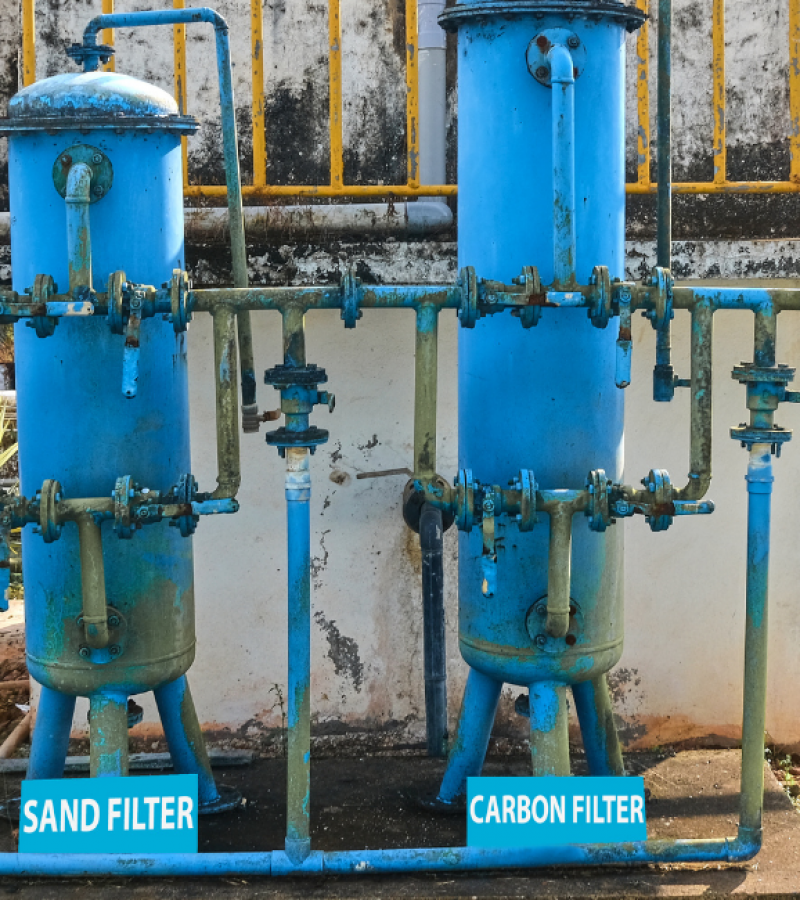STP
sewage Treatment Plant
Sewage Water Treatment
Sewage treatment is the process of removing contaminants from wastewater and household sewage water.
It includes physical, biological and sometimes chemical processes to remove pollutants. Its aim is to produce an environmentally safe sewage water, called effluent, and a solid waste, called sludge or bio-solids, suitable for disposal or reuse. Reuse is often for agricultural purposes, but more recently, sludge is being used as a fuel source.
Water from the mains, used by manufacturing, farming, houses (toilets, baths, showers, kitchens, sinks), hospitals, commercial and industrial sites, is reduced in quality as a result of the introduction of contaminating constituents. Organic wastes, suspended solids, bacteria, nitrates, and phosphates are pollutants that must be removed.

To make wastewater acceptable for reuse or for returning to the environment, the concentration of contaminants must be reduced to a safe level, usually a standard set by the Environment Agency.
The features of wastewater treatment systems are determined by:
- The nature of the municipal and industrial wastes that are conveyed to them by the sewers.
- The amount of treatment required to keep the quality of the receiving streams and rivers.
Sewage treatment plant processes fall into two basic types:
Anaerobic Sewage Treatment
Sewage is partly decomposed by anaerobic bacteria in a tank without the introduction of air, containing oxygen. This leads to a reduction of Organic Matter into Methane, Hydrogen Sulphide, and Carbon Dioxide etc. It is widely used to treat wastewater sludge and organic waste because it provides volume and mass reduction of the input material to a large extent. In addition to this, septic tank effluent still contains about 70% of the original pollutants and the process smells very badly, due to the Hydrogen Sulphide, if not vented correctly. The effluent produced by this process is highly polluting and cannot be discharged to any watercourse. It must be discharged into the Aerobic layer of the soil (within the top metre of the ground) for the aerobic soil bacteria to continue the sewage treatment via the aerobic process below.
Aerobic Sewage Treatment
In this process, aerobic bacteria digest the pollutants. To establish an aerobic bacterial colony you must provide air for the bacteria to breathe. In a sewage treatment plant, air is continuously supplied to the Bio-zone either by direct Surface Aeration using Impellers propelled by pumps which whisk the surface of the liquid with air, or by Submerged Diffused Aeration using blowers for air supply through bubble diffusers at the bottom of the tank.
These achieve almost complete oxidation and digestion of organic matter and organic pollutants to Carbon Dioxide, Water and Nitrogen, thus eliminating the odour and pollution problem above. The effluent produced by this process is non-polluting and can be discharged to a watercourse

EPEE Aqua Offers following BIO STP
BIO STP Containerised Type
Capacity: 1– 50 KLD
Technology: MBBR / SBR / MBR
Features:
- Semi-automatic Operation.
- Required less space.
- Very Compact and aesthetic.
- Reduced Installation and commissioning time on site.
- Plug and play operation.
- Easy installation and transportation.
- Customised product.
- Civil Work – Collection Tank and Container Foundation.
Typical Industries: IT Complex, Hotels & Restaurants, Labour Camps, etc.
BIO STP- Civil Type
Capacity: 1 KLD TO 1 MLD
Technology: MBBR / SBR / MBR
Features:
- Semi-automatic Operation
- Minimum Maintenance Required
- Underground Civil Work (RCC) Construction
- Erection and commissioning by Trained and experienced EP Biocomposites Ltd Team
- Treated Water can use for Irrigation, Gardening, Flushing Purpose
Typical Industries: Large Societies, Hospitals, Hotels, Large Industries, Commercial Complex.
Experience
installation & project development
A erat nam at lectus urna duis. Posuere sollicitudin aliquam ultr.
